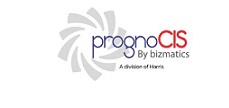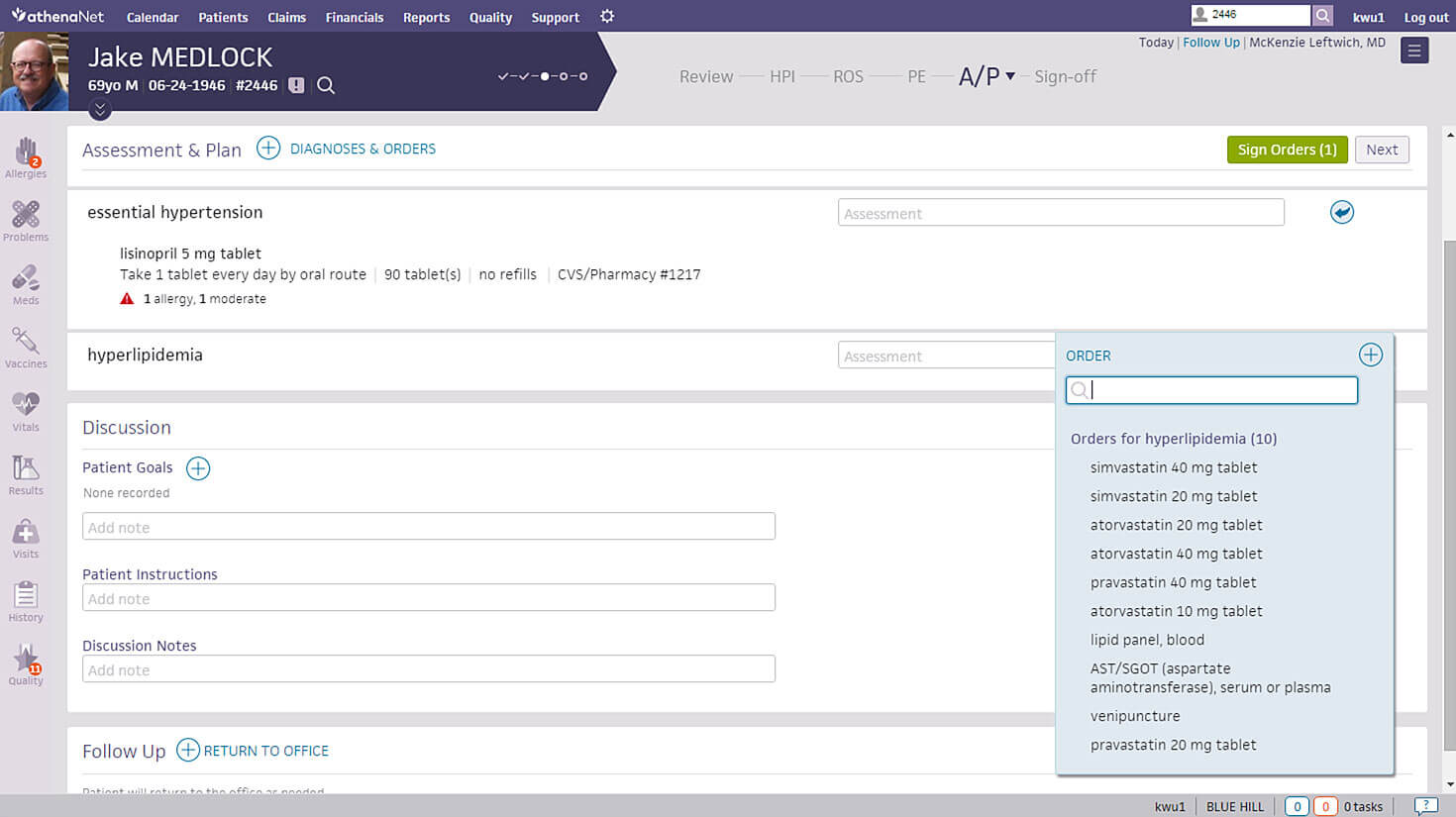What is e-Prescribing (e-Rx) EHR Software?
In this era of technology, the prescription pads for physicians have also been redesigned and this is revolutionizing the way patients get the medications they need for their treatment. The clinicians are now switching to electronic prescribing (e-Rx) software from paper prescriptions to handle their medication orders. e-Prescribing software solutions are preferred and even expected by elder patient populations as they have to take multiple medications at a time finds a study from AHIMA.
E-prescribing in an Electronic Health Records (EHR) software is the process of electronically generating and transiting prescription orders directly from the physicians to the patient’s chosen pharmacy. Simply put, the physicians can create and send prescriptions to the patient’s pharmacy of choice just using their computer or smartphone connected to the internet.
E-prescriptions are sent through very secure and closed networks that are managed by the healthcare software vendors. Some of the top EMR software is capable to connect with most of the pharmacies across the country. The lawmakers have praised e-prescriptions by passing laws that incentivize their implementation. The Medicare Improvements for Patients and Providers (MIPPA) Act of 2003 and the Health Information Technology for Economic and Clinical Health (HITCH) Act of 2009 are some of the examples of these laws. The e-prescribing (e-Rx) software has many benefits including:
- Guaranteed Legibility
- Improved Accuracy
- Faster Access to Information
- Increased Patient Convenience
- Improved Patient Safety
Features of e-Prescribing (e-Rx) EHR Software
To have a good understanding of how a software works, it is advisable to learn about the different features and functionalities of the software. Before choosing an e-prescribing (e-Rx) EHR software, you should check if the software has the following key features:
Prescription Selection – The physicians should be given more than one option to choose from searching for a medication to include in the patient’s prescription order. The software should also feature generic alternatives to brand name drugs.
Medication Creations & Submission – The software must be able to generate new prescriptions to be sent automatically to the pharmacy of the patient’s choice, from their computers and mobile devices. The EMR software should also have software management tools to ensure if the pharmacies have received the prescription orders.
Interaction Checks – The Top E-prescribing EHR software must offer alerts and warning feature for various potential reactions from a specific prescription, like allergies, drug interactions, duplicates, and dosage amounts.
Prescribing History – The software should feature every patient’s medication history through the pharmacy’s database or through other channels like pharmacy benefit managers and insurance payers.
Refill Request Authorization – The pharmacies must be able to send refill requests to physicians directly through the software. The physicians can then approve or reject these requests electronically from the EMR software.
What You Need To Know About An EMR Software
Overview
Electronic Medical Records Software or commonly referred to as EMR Software represents the electronic method of storing medical records for patients. Using specially designed software, physicians and other medical professionals can store anything ranging from patient demographics to extensive clinical information about patients, such as medical history, social history, lab reports and more.
EMR Software by Specialty
Since all medical providers (MDs, DOs, PAs, NPs, LCSW, OT etc.) work in a distinct manner based on their background and medical specialty, EMR Software or EMR Software must accommodate the unique style and documentation requirements. Examples of such specialty-specific features include the ability to annotate on images or capability to store before/after photos for Pain Management specialists and Dermatology specialists respectively. Similarly, other specialties such as Pediatrics, Oncology, Podiatry, Ophthalmology, Neurology, Nephrology, Dialysis Centers, Rheumatology and Chiropractic Care require their unique set of specialty-specific features to simplify adoption.
Meaningful-Use
Since the introduction of the HITECH Act, healthcare IT has undergone a massive transition starting from the widely recognized Meaningful Use program to what is now known as MACRA, the Medicare EMR Incentive Program. The Meaningful Use program has transformed and now formed part of the four components of the new Merit-Based Incentive Payment System (MIPS), which itself is a fundamental part of MACRA.
For some medical practices, the transition from paper-based records to EMR Software (Electronic Medical Records Software) has not been a simple one. Regardless, realizing that the benefits of utilizing ONC Certified EMR Software far outweigh the hassle and challenges associated with it – ensuring a viable future, most practices today have successfully transformed their clinical and administrative operations to EMR Software.
EMR Software Benefits
Aside from ensuring tangible financial incentives and profitability, practices converting to EMR / EHR Software have seen the following benefits:
EMR Software Requirements by Practice Size
Just like a medical specialty, EMR Software requirements also depend on the size of the medical practice. From solo provider clinics to large multi-provider, multi-specialty clinics, every practice has unique inherent challenges that must be addressed by the EMR Software vendor.
Small or Solo Provider Practices
A small doctor’s office not only has a limited number of staff members but their EMR Software budgets are also extremely low compared to a large enterprise such as a hospital. Due to these budgetary constraints, many providers simply choose to employ Free EMR Software or choose an affordable EHR Software vendor with a low fixed monthly fee. Cloud-based access is one such important requirement so that these providers can access patient charts even from home when needed.
Medium-Sized Practices
These practices usually consist of 5 to 10 medical providers often belonging to the same medical specialty. Their requirements are more stringent, while their budget is also considerably large. Aside from specialty-focused requirements (EHR Software by Specialty), these practices also require unique features such as interoperability, dedicated customer support, multi-device support as well as extensive reporting functionality to keep an eye on the overall performance of the practice.
Large Practices
Larger group practices generally comprise more fifteen or often twenty medical providers. These practices usually provide medical services that fall under various medical specialties (Orthopedics, Pain Management, Surgery, Chiropractic Medicine, Family Medicine etc.). Therefore, these practices require support for multiple users to access the system simultaneously, as well as for the Scheduling software to accommodate multiple locations, providers and resources such as Dialysis Chairs, procedure room allocation etc. These practices also keep replacing or adding staff members and need a scalable solution.
Hospitals or Enterprise Organizations
EHR software companies such as Epic, Cerner, AllScripts, NextGen, Athenahealth, IMS by Meditab, eClinicalWorks, Meditech, McKesson, MEDHOST etc. usually target and provide solutions for larger corporations like Hospitals, ACOs, PCMH, IPAs, CINs (Clinically Integrated Networks), Public Health Departments etc.
These customers have the most elaborate list of requirements, which are usually documented in the form of an RFI or RFP to assess and shortlist vendors that can meet them. The requirements consist of features like inventory management modules, interface with local labs (LIS), machines and diagnostic equipment along with drug dispensing (pharmacy management software) and electronic medication administration records (EMAR) etc.
These entities also require the EHR software also need to integrate with multiple other software and medical devices.
Why does your practice need EMR Software?
Since the introduction of Meaningful Use, most healthcare practices simply have little or no choice but to convert their practice operations to EHR software. However, most providers today select the EHR software of their choice that best suits their specific needs and must perform an extensive search to evaluate all available options before they find one that is suitable. Most potential EMR Software buyers in the market today have the following in common:
- Do not know what they are looking for
- Know exactly what they want but don’t know where to start or find it
- Relying on advice from colleagues using EMR software already
Although #3 is ideal, every provider and practice workflows are unique and therefore what works for one provider may not suit the other. “One size fits all” simply does not apply in the world of healthcare IT. Software experts and industry specialists are an ideal source of information, advice and ultimately ensuring that the right decision is made.
Markets Trends to Be Aware Of
Like anything else, the EMR software industry is also subject to constant changes. From new technology to legalities and governing bodies, everything is constantly changing. Here are some of the changes I think it would do well for you to keep track of.
Meaningful Use Changes
At a previously held health care conference Andy Slavitt, the administrator of the Centers for Medicare & Medicaid Services had declared that Meaningful Use was over, and would be replaced by the end of that year with something better. But a deeper look into the claims revealed that meaningful use was very much there, only much improved.
Cloud-Based Services
A previously held research found that only 25% of practitioners were interested in a web-based model and only 50% were willing to have it as an initial model that was to eventually transition to cloud-based. Cloud-based EMR software cuts down on steep upfront costs for client-servers and can be hosted on any device that has a web-browser. It is no surprise that now more and more vendors are transitioning to cloud-based software because the industry demands are changing.
EMR/EHR Software Demand
In 2025, the demand for EMR software solutions for healthcare practices has continued to rise, with market growth estimated at around 6-7% year-over-year as healthcare providers increasingly prioritize digital transformation and interoperability. This increase is largely driven by the adoption of advanced technologies like AI and cloud computing within these systems, which enhance clinical workflows and patient care. Epic Systems has expanded its dominance, now capturing over 35% of the market, particularly among large multispecialty organizations. Meanwhile, Oracle Health (formerly Cerner) has faced challenges, especially in retaining smaller hospitals, contributing to a slight decline in its market share. Together, major players like Epic, Oracle Health, Meditech and Allscripts account for a significant portion of the EHR market, reflecting the ongoing evolution and consolidation within the industry.












